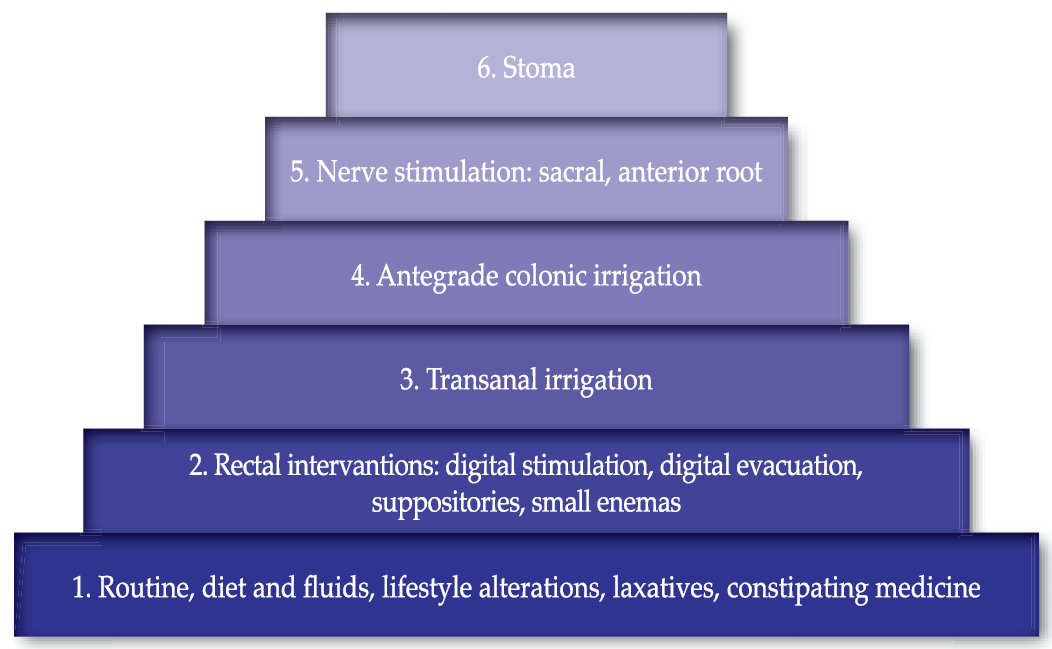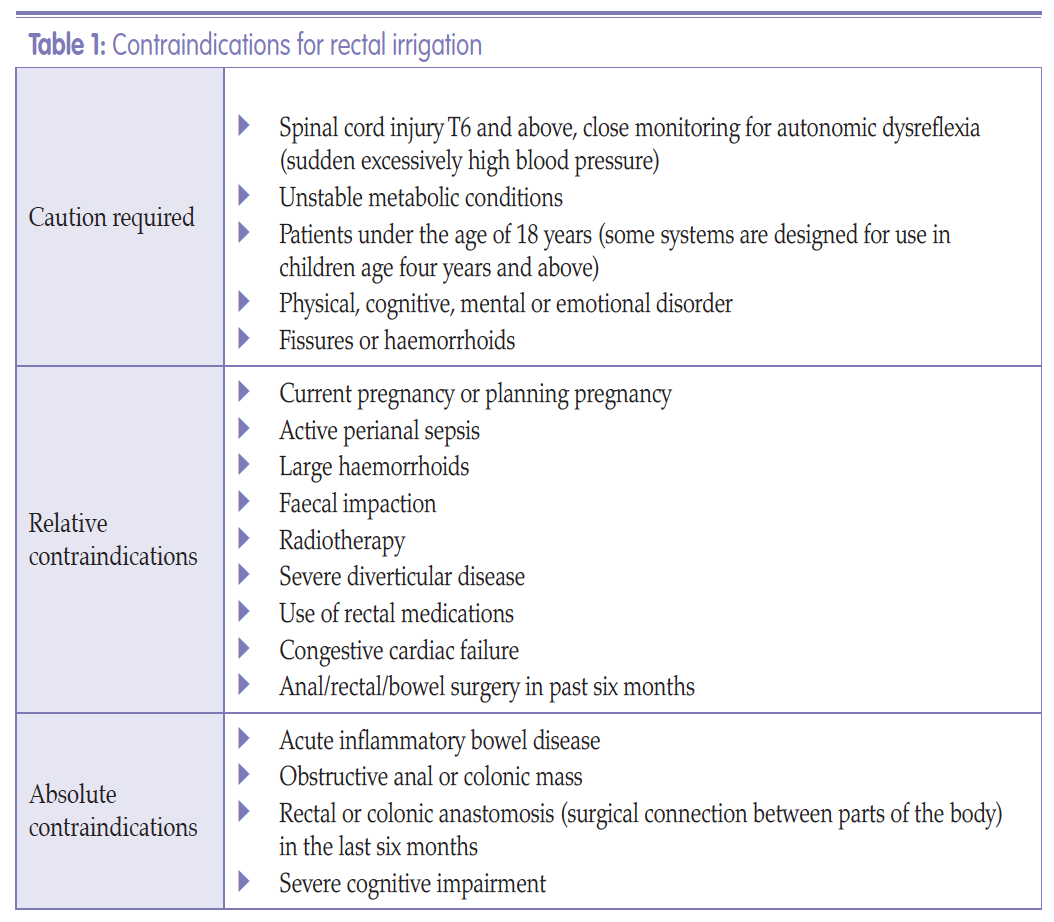References
Biering-Sorensen F, Bing J, Berggreen P, Olesen GM (2009) Rectal perforation during transanal irrigation: a case story. Spinal Cord 47(3): 226–67
Chan DSY, Saklani A, Shah PR, Lewis M, Haray PN (2011) Rectal irrigation: a useful tool in the armamentarium for functional bowel disorders. Colorectal Dis 14: 748–52
Cheng C, Chan A, Hui W (2003) Coping strategies, illness perception, anxiety and depression of patients with idiopathic constipation. Aliment Pharmacol Ther 18(3): 319–26
Christensen P, Bazzocchi G, Coggrave M, et al (2006) A randomised controlled trial of transanal irrigation versus conservative bowel management in spinal cord injured patients. Gastroenterol 131(3): 738–47
Christensen P, Krogh K, Buntzen S, Payandeh F, Laurberg S (2009a) Longterm outcome and safety of transanal irrigation for constipation and faecal incontinence. Dis Colon Rectum 52: 286–92
Christensen P, Andreasen J, Ehlers L (2009b) Cost effectiveness of transanal irrigation versus conservative bowel management for spinal cord injury patients. Spinal Cord 47(2): 138–43
Christensen P, Krogh K (2010) Transanal irrigation for disordered defecation. Scand J Gastroenterol 45: 517–27
Chung AL, Emmanuel AV (2006) Gastrointestinal symptoms related to autonomic dysfunction following spinal cord injury. In: Weaver LC, Polosa C (eds). Progress in Brain Research. Elsevier, Amsterdam: 317–33
Coggrave M, Ash D, Adcock C, et al (2012) Guidelines for Management of Neurogenic Bowel Dysfunction in Individuals with Central Neurological Conditions. Available online: www.mascip.co.uk (accessed 24 February, 2017)
Coggrave M (2007) Transanal Irrigation for bowel management. Nurs Times 103(26): 47–9 Emmanuel A (2010) Review of the efficacy and safety of transanal irrigation for neurogenic bowel dysfunction. Spinal Cord 48(9): 664–73
Emmanuel A (2011) Current management strategies and therapeutic targets in chronic constipation. Ther Adv Gastroenterol 4(1): 37–48
Emmanuel AV, Krogh, K, Bazzocchi G, et al (2013) Consensus review of best practice of transanal irrigation in adults. Spinal Cord 51: 732–8
Emmett CD, Close HJ, Yiannakou Y, Mason JM (2015) Transanal irrigation therapy to treat adult chronic functional constipation: systematic review and meta-analysis. BMC Gastroenterol 15(139): 1–8
Hinds JP, Eidelman BH, Wald A (1990) A prevalence of bowel dysfunction in MS: a population survey. Gastroenterol 98: 1538–42
Holroyd S (2015a) What can we do to improve the patient experience of continence care? J Comm Nurs 29(2): 66–73
Holroyd S (2015b) How can community nurses manage chronic constipation? J Comm Nurs 29(5): 74–82
Krogh K, Ostergaard K, Sabroe S, Laurberg S (2008) Clinical aspects of bowel symptoms in Parkinson’s disease. Acta Neurol Scand 117: 60–4
Lazarescu A, Turnbull GK, Vanner S (2009) Investigating and treating fecal incontinence: when and how. Can J Gastroenterol 23(4): 301–8
Lukacz ES, Sampselle C, Gray M (2011) A healthy bladder: a consensus statement. Int J Clin Pract 65(10): 1026–36
NICE (2007) Faecal incontinence in adults: management. Available online: www.nice.org.uk (accessed 24 February, 2017)
Norton C, Whitehead WE, Bliss DZ, Harari D, Lang J (2009) Conservative and pharmacological management of faecal incontinence in adults. In Abrams P, Cardozo L, Khoury S, Wein A (eds). Incontinence. Health Publications, Plymouth: 1321–86
Potter J, Wagg A (2005) Management of bowel problems in older people: an update. Clin Med 5(3): 289–95
Shandling B, Gilmour RF (1987) The enema continence catheter in spinal bifida: successful bowel management. J of Ped Surg 22(3): 271–3
Tack J, Müller-Lissner S, Stanghellini V (2011) Diagnosis and treatment of chronic constipation: a European perspective. Neurogastroenterol Motil 23: 697–710
Tod AM, Stringer E, Levery C, Dean J, Brown J (2007) Rectal irrigation in the management of functional bowel disorders: a review. Br J Nurs 16(14): 858–64
Woodward S (2012) Assessment and management of constipation in older people. Nurs Older People 24(5): 21–6


